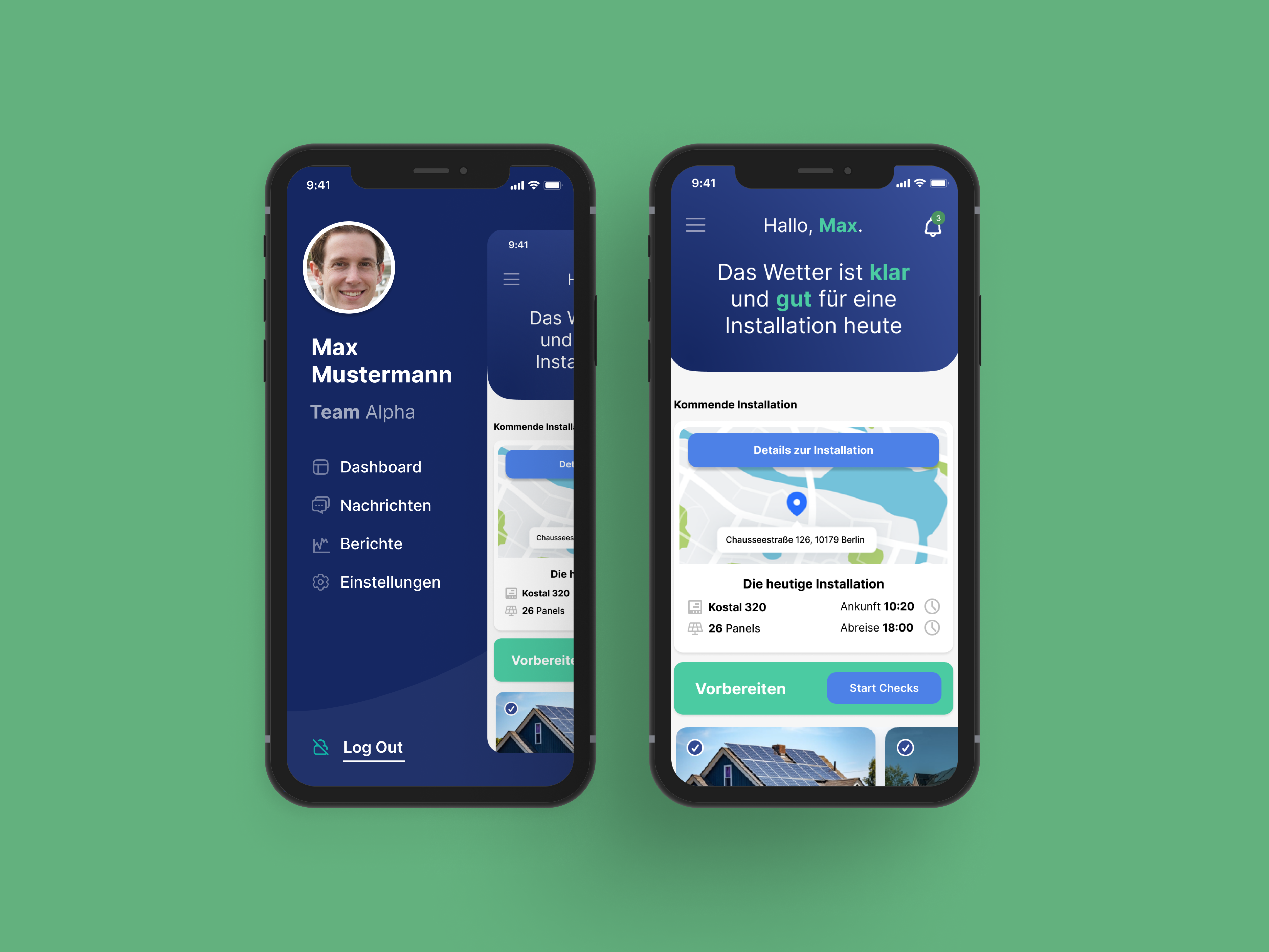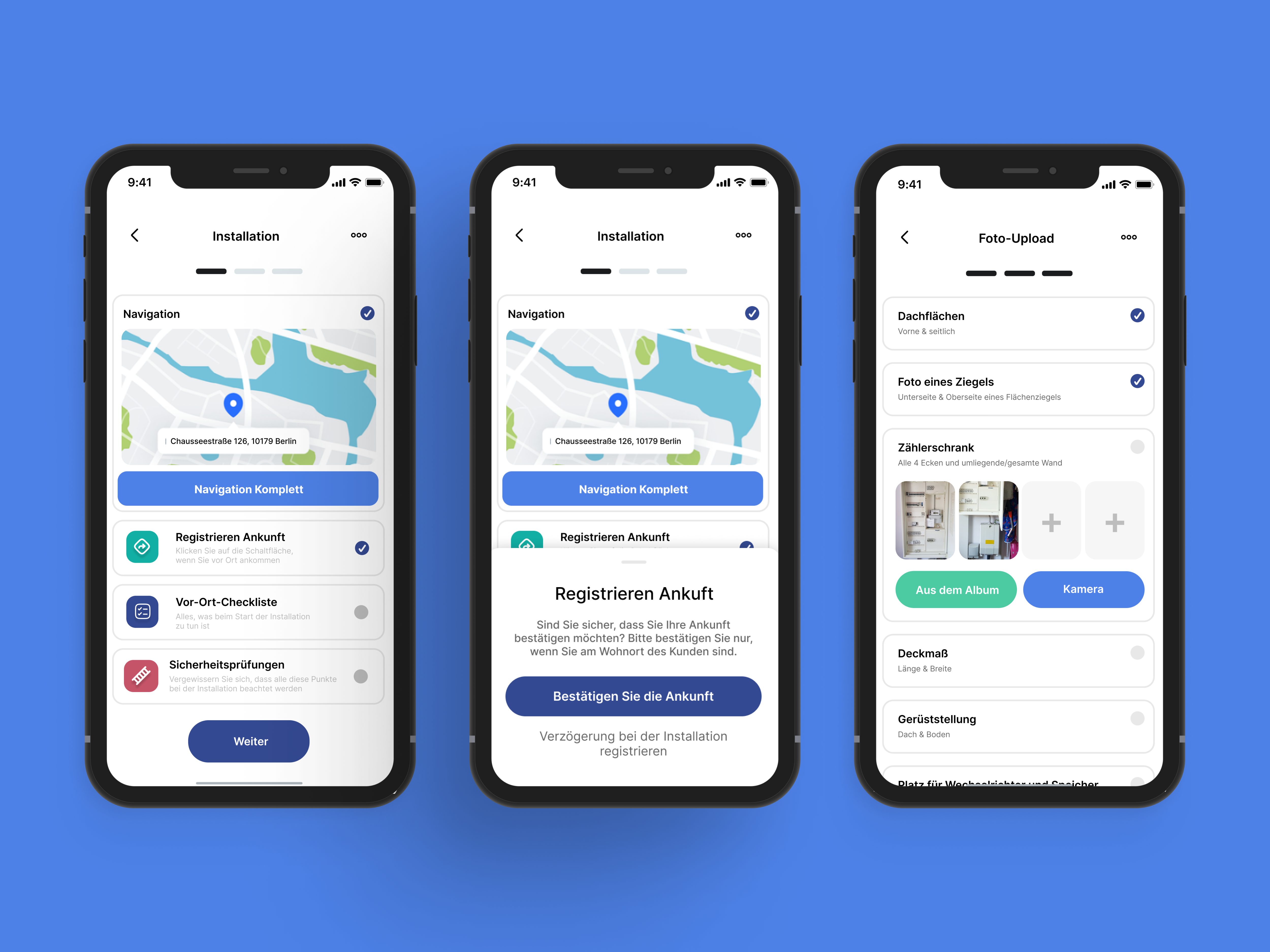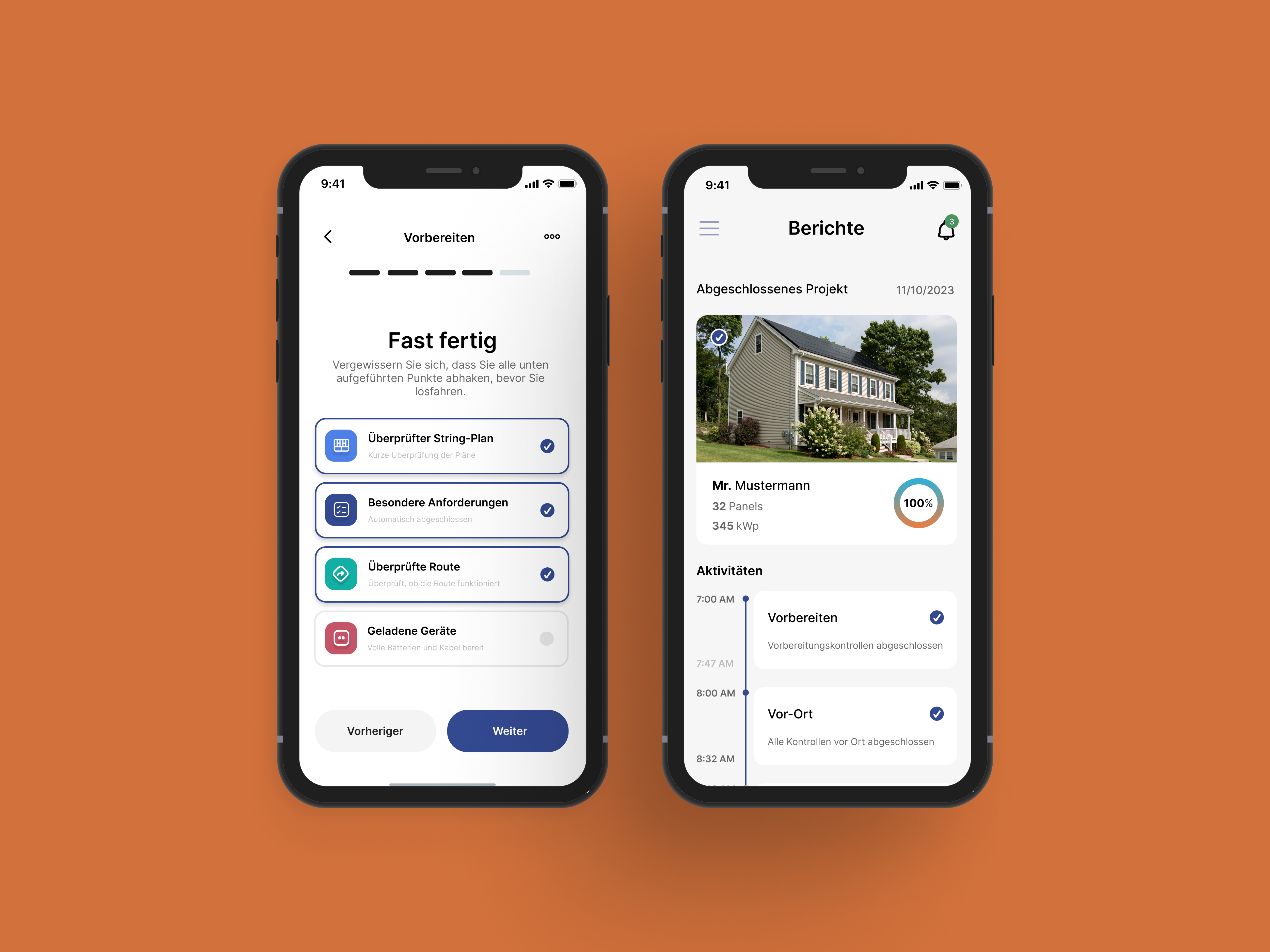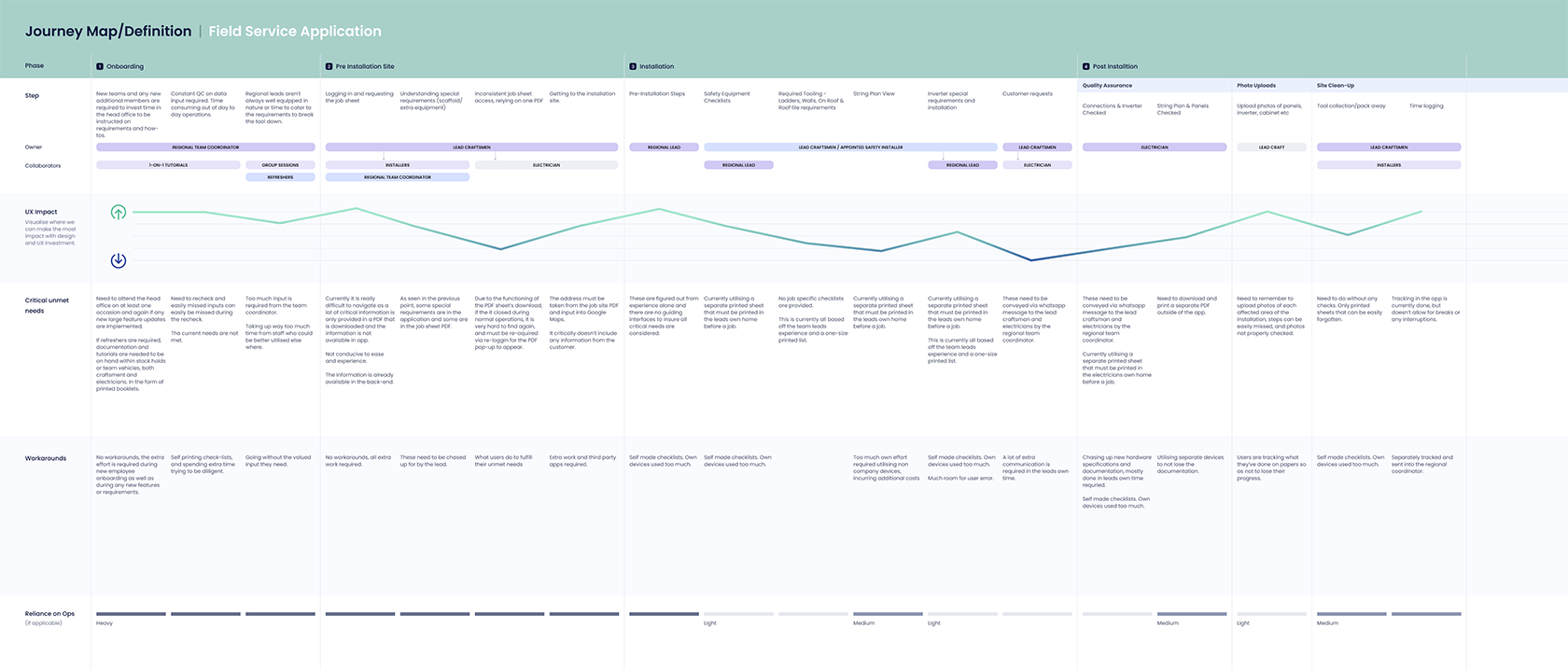Field Service App
A mobile app for internal company use. Acting as the link between operations and the in-the-field craftsmen it delivered key information and allowed for back and forth communication.
Info
- Role
- Product Designer
- Timeline
- March - October 2023
- Status
- Private Active use
- Tools
- Figma / Token Studio / Storybook
- React Native
Overview
Problem
After utilising an off-the-shelf product for a number of years, many UX roadblocks were being hit, with required input being missed and communication requiring extra tooling.
Outcome
I designed and prototyped a new application to better serve the business needs. Increasing efficiency, reducing costs and improving necessary data entry from 38% to 97%. With improved onboarding, utilised gamification techniques and ease of use. I also supported the development with storybook components and design tokens.
Project Breakdown
Requirements
Business Needs & Goals
Who is it for? What personas?
User flow? Project Scope?
Reasonable existing comparisons?
Research
Discovery phase through research and review.
Internal existing product research
Stakeholder Interviews
User Interviews
User Flows
Initial draft flows
Whiteboard session with key stakeholders
Emphasise and prioritise primary flows
Testing and Presentation
Early Ideation
Information Architecture
Wireframes
Structure focus
Wireframe Reviews
Prototype & Design Share
Prototype created to illustrate full flows and make dev handoff easier
Key animations and interactions created
Stakeholder & Engineer Design Share and Reviews
Iteration if required
Usability Testing
User Tests & Feedback
Results Share
Iteration
Final Reviews & Iterations
Stakeholder & Engineering Sign off
Business Presentation (where required)
Iteration
Deliverable Handoff
Implementation (Prototype commenting for questions)
Consistent UX/PD & PM Communication
Post UX Review
Metrics established
Solution
As the lead product designer, I spearheaded the design and prototyping of a new application tailored to meet the evolving business needs. The solution aimed to address the following key objectives:
- Operational Efficiency: The primary focus was on streamlining internal processes related to installation tracking, performance monitoring, and customer management to improve overall operational efficiency.
- Cost Reduction: By automating manual tasks and optimising workflows, the application aimed to reduce operational costs associated with inefficiencies and errors.
- Data Accuracy Improvement: Accurate data entry and management were crucial for ensuring the reliability of system performance metrics and customer information. The new application incorporated validation checks and guided flows to minimise errors and discrepancies.



Results
In conclusion, the design and prototyping of the application exemplify the transformative impact of strategic design interventions in addressing complex operational challenges. By focusing on efficiency, cost reduction, data accuracy, and gamification, we delivered a solution that not only met but exceeded expectations. Moving forward, the continued collaboration between design and development teams will ensure the sustained success and evolution of the application to meet the company's evolving needs in the renewable energy sector.
